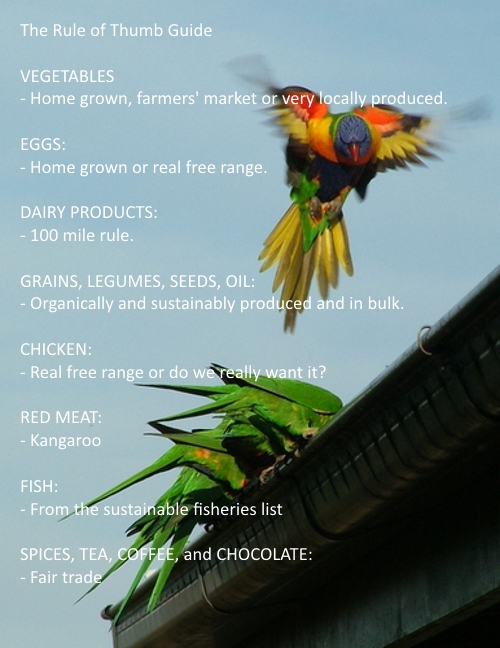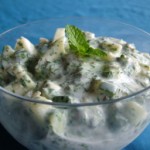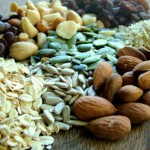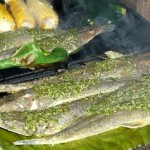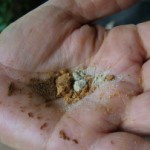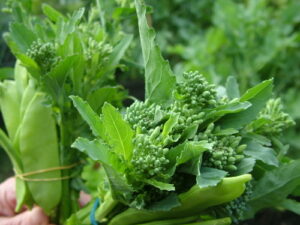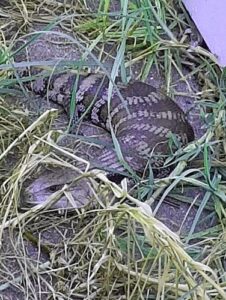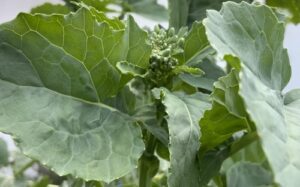This is a blog about food that is good for you, good for the planet, and just plain good … all at once.
But what does that look like, in practice?
Good for you
When I started this blog, over a decade ago, “good for you” meant nutrient-dense, real food. A big part of what got me started with it was fury at the industrialisation of food production – supermarket shelves 90% full of corn syrup, palm oil and soy beans configured in different ways, disguised by different colourings, flavourings and packaging or processed through feed lot cattle and cage chickens.
But over the last decade the climate crisis has deepened. “Good for you” increasingly has come to mean food security – nutrient dense food you can access and afford, and that you will still be able to access and afford in droughts and floods and fires and economic mayhem. “Good for you” now means something more like setting up for resiliance.
Good for the planet
Permaculture has three core ethics: care for the earth, care for people, and distribute a surplus – which basically means don’t be greedy.
But it isn’t simple being good! It is really tempting to just give up on the complexity of decisions that take count of carbon cycles, water cycles, climate change, biodiversity, resource depletion, pollution, globalisation, fair trade…. And then to weigh them against each other: Is it better to buy local rice that is irrigated unsustainably, or imported organic rice?
Permaculture has an insight that can help cut through: “simple” and “easy” are not the same thing. Natural systems achieve stablility not through simplicity, but through redundancy and a complex set of feedback loops that allow the system to constantly adjust. We big-brained human animals are very good at making those kind of rule of thumb decisions, using intuition to weigh apples against oranges and fine tune as we go.
Which is nice, because that gets us to a do-able position on making our food consumption decisions ethical!
We don’t have to be purist about it. We just have to take “care for the earth, care for people, and share”, into account in making all the dozens of little decisions we make every day, constantly refining them as we learn, constantly curious about new opportunities and information.
The 100 mile diet is a good starting place. Choice says that “A typical basket of groceries from the supermarket has “food miles” equivalent to two loops of the globe”, which is pretty stunning! Local food is also more likely to be fresh, in season, and least processed. And you have a democratic say in the labour laws that were used to produce it. (But I am not about to give up chocolate).
Here’s my rule of thumb boundaries:
Fruit, Vegetables and Herbs
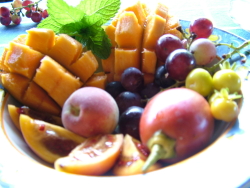
The mainstay – vegetables and fruit – are where gardening or buying from a very local permaculture garden type farmer is worth it. It’s here that the ethic of buy local carries its own natural consequences. If you buy peas that have been picked more than a day ago, you will be disappointed. If you buy tomatoes that have been picked green on the other side of the world and artificially ripened, well, serves you right!
Fruit and vegetables are bulky, delicate, need lots of packaging and cold storage, are produced very exploitatively in some parts of the world, and can be locally produced in enough variety for a healthy gourmet diet practically anywhere. I eat home grown as much as possible, supplemented by local farmers markets preferring organic, sustainable producers.
Eggs
Eggs are also top of the list for backyard production. A couple of chickens do a huge amount of organic waste disposal work, keeping lots of household waste out of landfill and in the food cycle. There is also a fundamental problem with large scale commercial egg production – chickens don’t like being kept in large flocks. So it is difficult ethically produce eggs at anything larger than a backyard or permaculture mixed farm scale.
Dairy Foods
Fresh dairy foods need refrigerated transport and cold storage, so it is good to get them from a really local source. Most people don’t have the resources, though to keep a cow or a goat. So the 100 mile standard is a good guide to follow. You can avoid overpackaging by producing your own yoghurt, and if you are keen, home producing cheese. Using dried skim milk powder where recipes allow helps dairy farmers even out the gluts and shortages in the annual cycle. Beware flavoured yoghurts labelled as “low fat” but stuffed with sugars.
Grains, Legumes, Seeds and Nuts
Grains, legumes, seeds and nuts, however are dense, travel well, don’t need cold storage, and there are economies of scale in growing, harvesting and processing. If you are a serious gardener, it is really possible to provide yourself with a good percentage of them. But otherwise, I think how they are produced is the first criteria, then where. I prefer organic, in bulk to avoid packaging, and tune in to information about sustainability.
Red Meat
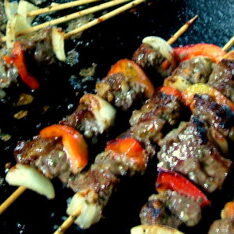
Beef and lamb are usually free range in Australia, but they have a huge environmental impact, both on climate change and on resources. I’ve cut right back on them. Kangaroo is a much better choice for red meat in Australia, from any number of perspectives. And anyway, it’s healthier. See the links.
Chicken
Chicken is a dilemma. Chickens are not nice to each other when they are stressed, and many consumers would be very disturbed if they were confronted face to face with their chicken meat as live animals. They can be produced ethically in a free-range permaculture system, but almost never are. The pragmatic solution might be to look for sources of expensive, ethically produced chicken. If you find it, cut right back on chicken consumption to make it affordable, and if you don’t, cut right back anyway.
Seafood
Fish is another dilemma. Harvesting wild fish will soon be seen in the same light as logging old growth forest. The problem is not the harvesting – wild fish have a good life and being part of a chain of predation is their lot in life – very few fish die of old age. The problem is that a long history of gross overexploitation has taken the resource past the sustainable harvest level, to the point that remaining “old growth” must be uncompromisingly defended. Predators must have a very respectful and protective relationship with their prey species. Those that don’t become extinct.
But where does that leave us? Oily fish with their omega 3 and 6 fatty acids are a really powerful part of a healthy diet. It is worth deciding to be a good predator, respectful and protective, and printing off a list of sustainable fisheries or emailing it to your phone so you have it with you when shopping. See the links for some good sources for your list.
Spices, Tea, Coffee, Chocolate
Spices often have very small climate zones, and they’re so distinctive that they aren’t easily substituted, which is why they have been traded for all of human history. Buy fair trade. I’m lucky that I happen to live in the right climate zone for growing coffee and tea , but otherwise, the same goes for them. And chocolate.
And just plain good …
Food gardens can be very beautiful. Food gardening can be hugely enjoyable meditation, exercise, fun and creativeplay.
But it isn’t always.
Subsistence agriculture can also also be drudgery for little return, especially in a culture that has lost most of the skills. Permaculture doesn’t mean going back to the lifestyle of a twelth century peasant. Instead, it means the neat and very clever application of systems thinking, design, and science to the puzzle of leaving the place better than we found it, and living well meanwhile.
Traditional food cultures worldwide are based on produce bred for eating quality, and not for transport, handling, cold storage and shelf life. If you start with local, heritage varieties of produce, fresh and in season, you don’t need to be much of a masterchef to make something very good of it.There are times when it is fun to spend a whole day shopping and cooking something complicated and amazing. But the kind of food that sustains life needs to be unfussy and fit into a really full and busy day. Food to enjoy, alone or with kids and family, with friends, on special occasions, can be a daily joy.
Please join the discussion. Not simple at least makes for interesting!
